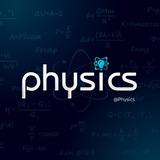The thousands of nuclear spins surrounding gallium arsenide quantum dots can interface with electron spin qubits and photons. With quantum engineering, this nuclear spin ensemble becomes a robust register for quantum information storage.
✅Source : Click here
━━━━━━━━━━━
☢ @Physics ⚡
✅Source : Click here
━━━━━━━━━━━
☢ @Physics ⚡
👍6🔥3❤2🤩2
Quantum error correction is essential for reliable quantum computing, but no single code supports all required fault-tolerant gates. The demonstration of switching between two codes now enables universal quantum computation with reduced overhead.
✅Source : Click here
━━━━━━━━━━━
☢ @Physics ⚡
✅Source : Click here
━━━━━━━━━━━
☢ @Physics ⚡
❤3👍3🔥2
Electron qubits in solid-state systems often couple to nuclear spins in the surrounding material, causing decoherence. Now, nuclear spins in silicon have been put into a dark state, which could improve qubit coherence for quantum applications.
✅Source : Click here
━━━━━━━━━━━
☢ @Physics ⚡
✅Source : Click here
━━━━━━━━━━━
☢ @Physics ⚡
❤4👍4🔥2
Coherent control of chemical reactions is a central theme in quantum chemistry. Now, a cold atom experiment demonstrates a method for steering the outcome of three-body recombination processes using a tunable Feshbach resonance.
✅Source : Click here
━━━━━━━━━━━
☢ @Physics ⚡
✅Source : Click here
━━━━━━━━━━━
☢ @Physics ⚡
❤6👍4🔥2
The ALPHA Collaboration reports measurements of the hyperfine components of the 1S–2S transition in trapped antihydrogen. They interpret the results as a test of the invariance of charge–parity–time-reversal symmetry.
✅Source : Click here
━━━━━━━━━━━
☢ @Physics ⚡
✅Source : Click here
━━━━━━━━━━━
☢ @Physics ⚡
❤3👍3🔥2
Thermal agitation of charge carriers, known as Johnson noise, is the dominant noise in electronic circuits. Now it has also been observed as a key noise source in integrated electro-optic photonic circuits, posing challenges for future applications.
✅Source : Click here
━━━━━━━━━━━
☢ @Physics ⚡
✅Source : Click here
━━━━━━━━━━━
☢ @Physics ⚡
❤5👍4🔥2
The effect of strong interactions on the physics hosted by flat bands remains largely unexplored in atomic systems. An experiment in a synthetic flat-band lattice now demonstrates an interaction-driven transition from localization to delocalization.
✅Source : Click here
━━━━━━━━━━━
☢ @Physics ⚡
✅Source : Click here
━━━━━━━━━━━
☢ @Physics ⚡
❤5👍5🔥2
A liquid–liquid transition in supercooled water has long been predicted. State-of-the-art simulations now precisely confine the temperature and pressure ranges for this transition, which are found to be within experimental reach.
✅Source : Click here
━━━━━━━━━━━
☢ @Physics ⚡
✅Source : Click here
━━━━━━━━━━━
☢ @Physics ⚡
❤3👍3🔥1🎉1
Bubble formation is a signal of false vacuum decay, in which a system transitions from a local energy minimum to a true vacuum. Now, simulations on a quantum annealer show how interactions between bubbles drive the long-time dynamics of this process.
✅Source : Click here
━━━━━━━━━━━
☢ @Physics ⚡
✅Source : Click here
━━━━━━━━━━━
☢ @Physics ⚡
❤6🔥3👍2
It has been proposed that the equilibration time of many-body systems is limited by a timescale determined by Planck’s constant and temperature. A bound of this kind has now been identified for a universal definition of equilibration time.
✅Source : Click here
━━━━━━━━━━━
☢ @Physics ⚡
✅Source : Click here
━━━━━━━━━━━
☢ @Physics ⚡
❤6👍4🔥3
